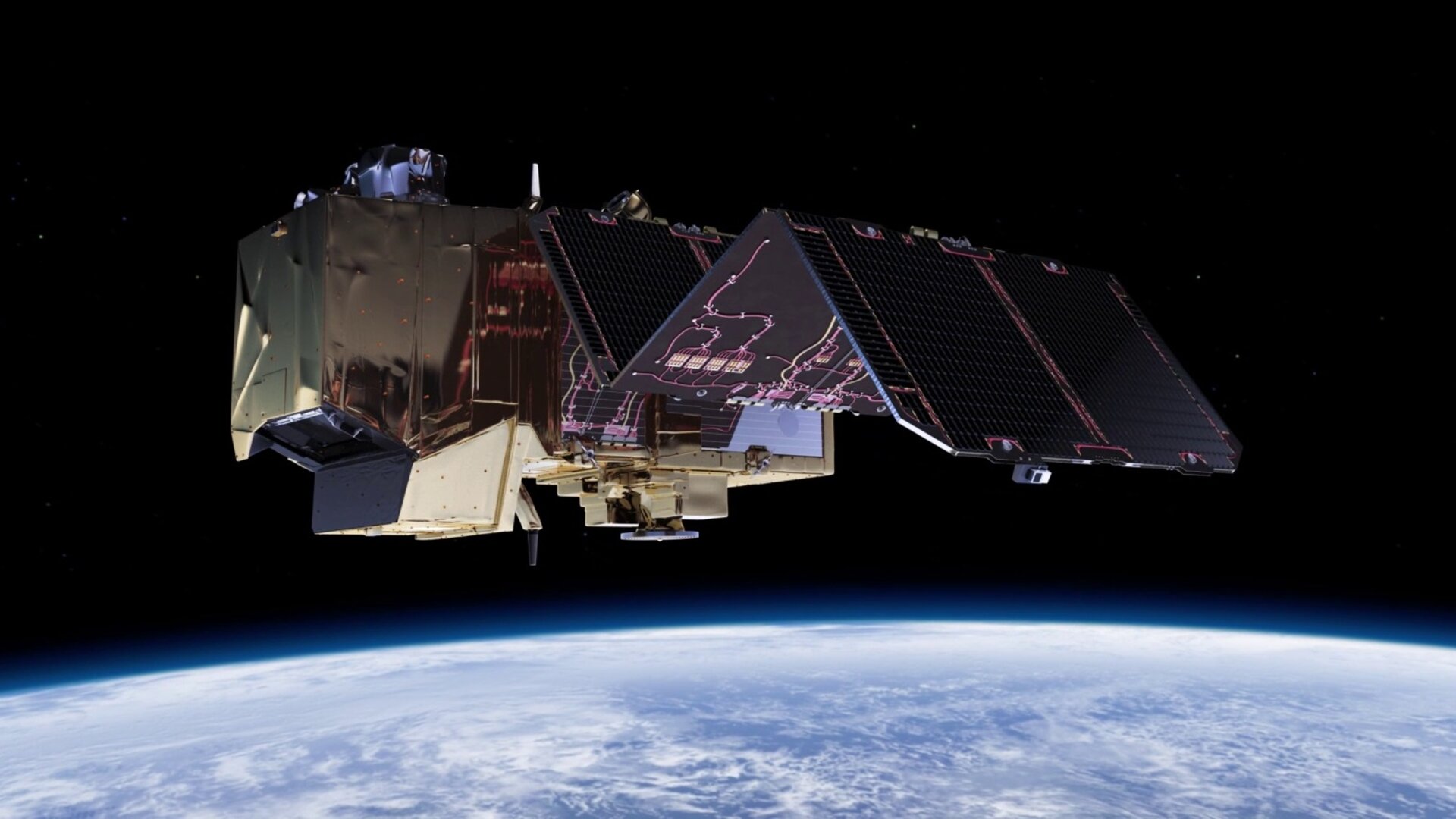Facts and figures
Launch: Sentinel-2A on 23 June 2015; Sentinel-2B on 7 March 2017; Sentinel-2C on 5 September 2024
Launcher: Vega rocket from Kourou, French Guiana
Orbit: Polar, Sun-synchronous at altitude of 786 km
Revisit time: Five days from two-satellite constellation (at equator)
Coverage: Systematic coverage of land and coastal areas between 84°N and 84°S
Life: Minimum of seven years
Satellite: 3.4 m long, 1.8 m wide, 2.35 m high
Mass: 1140 kg (including 123 kg fuel)
Instrument: Multispectral imager (MSI) covering 13 spectral bands (443 nm–2190 nm) with a swath width of 290 km and spatial resolutions of 10 m (4 visible and near-infrared bands), 20 m (6 red-edge/shortwave-infrared bands) and 60 m (3 atmospheric correction bands)
Receiving stations: MSI data: transmitted to core Sentinel ground stations and via laser link through EDRS; Telemetry data: transmitted to and from Kiruna, Sweden
Main applications: Monitoring agriculture, forests, land-use change, land-cover change; mapping biophysical variables such as leaf chlorophyll content, leaf water content, leaf area index; monitoring coastal and inland waters; risk mapping and disaster mapping
Mission: Developed, operated and managed by various ESA establishments
Funding: ESA Member States and the European Union
Prime contractors: Airbus Defence and Space Germany for the satellite, Airbus Defence and Space France for the multispectal instrument
Data access: sentinel.esa.int















 Germany
Germany
 Austria
Austria
 Belgium
Belgium
 Denmark
Denmark
 Spain
Spain
 Estonia
Estonia
 Finland
Finland
 France
France
 Greece
Greece
 Hungary
Hungary
 Ireland
Ireland
 Italy
Italy
 Luxembourg
Luxembourg
 Norway
Norway
 The Netherlands
The Netherlands
 Poland
Poland
 Portugal
Portugal
 Czechia
Czechia
 Romania
Romania
 United Kingdom
United Kingdom
 Slovenia
Slovenia
 Sweden
Sweden
 Switzerland
Switzerland





























